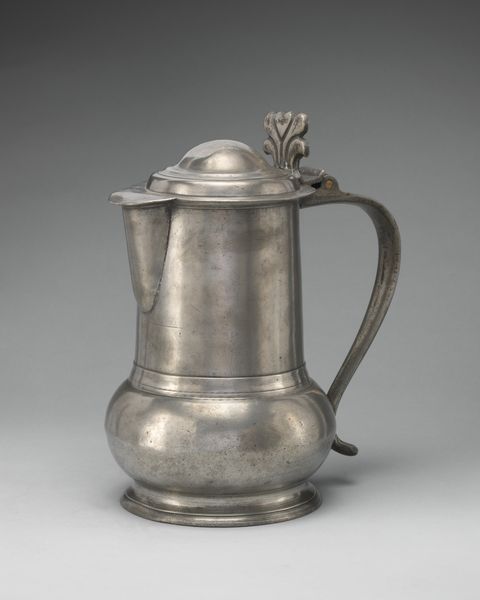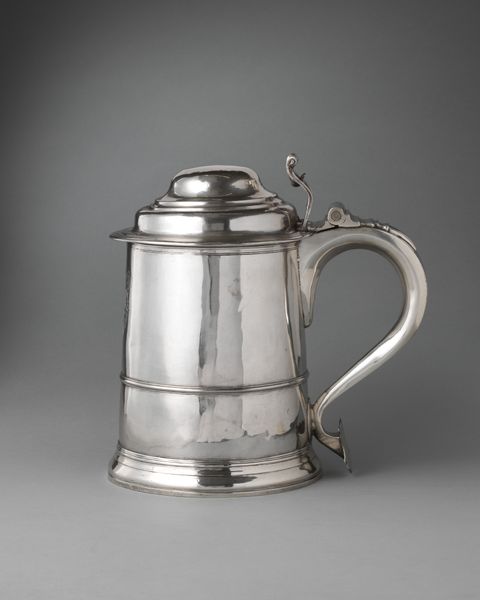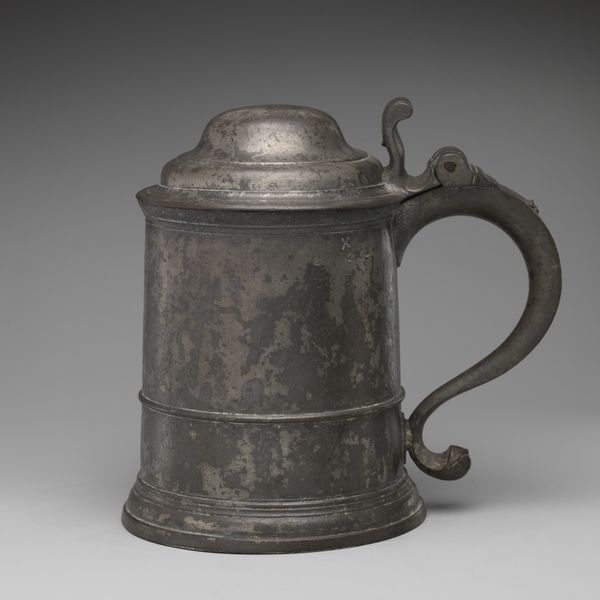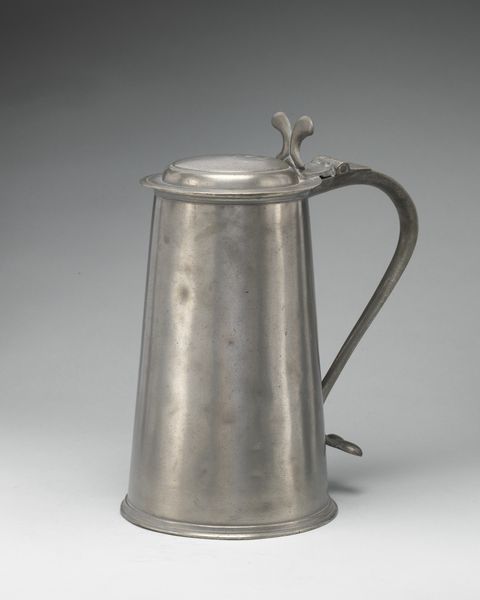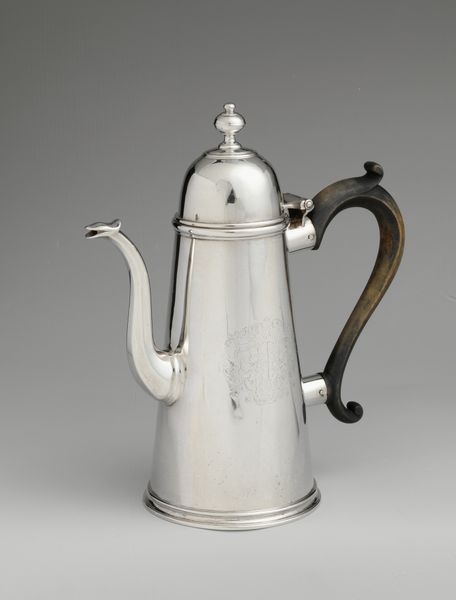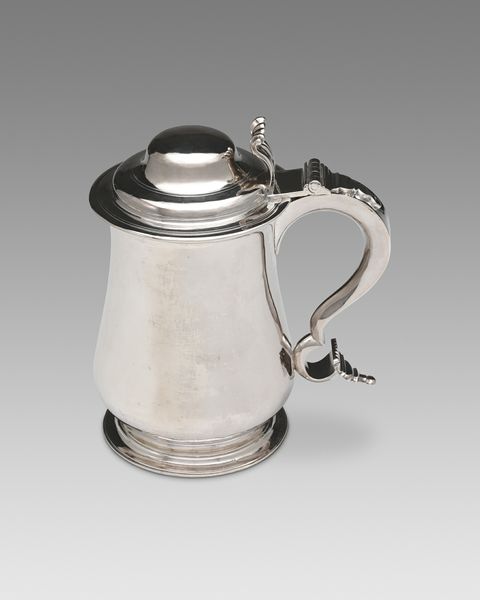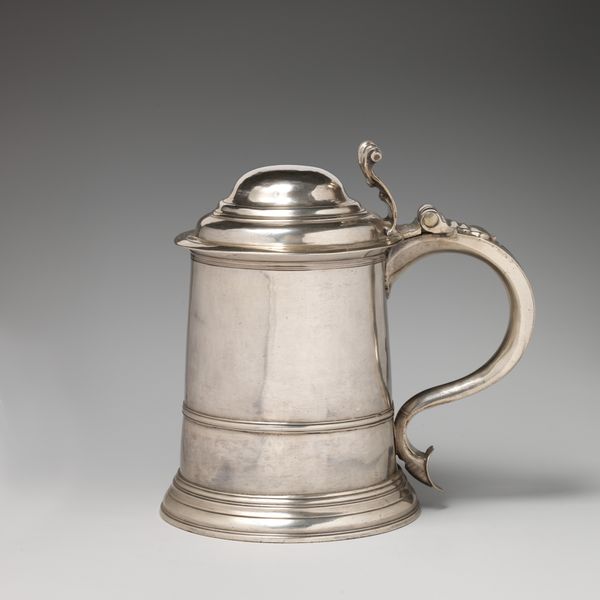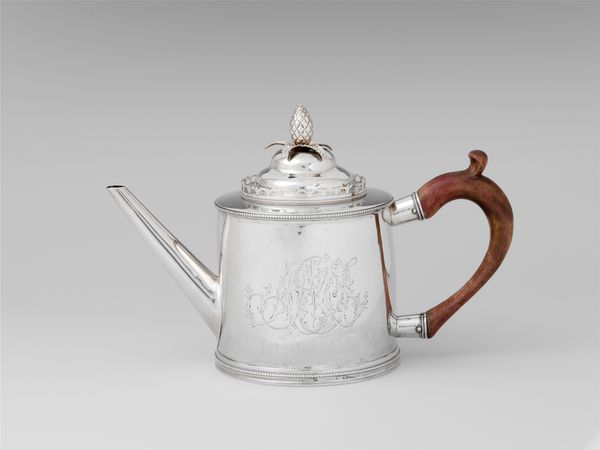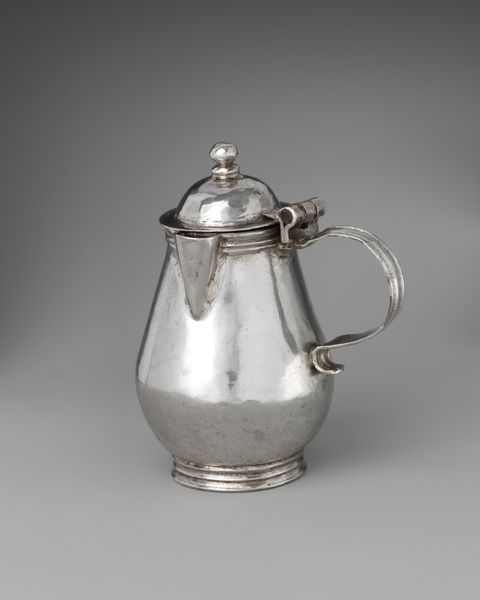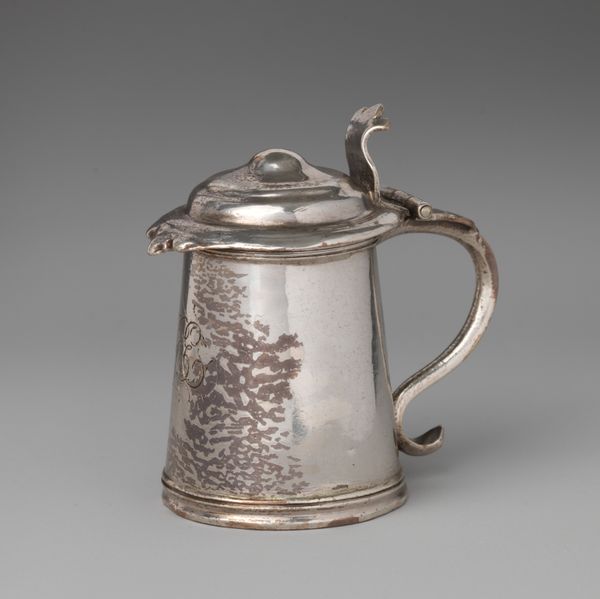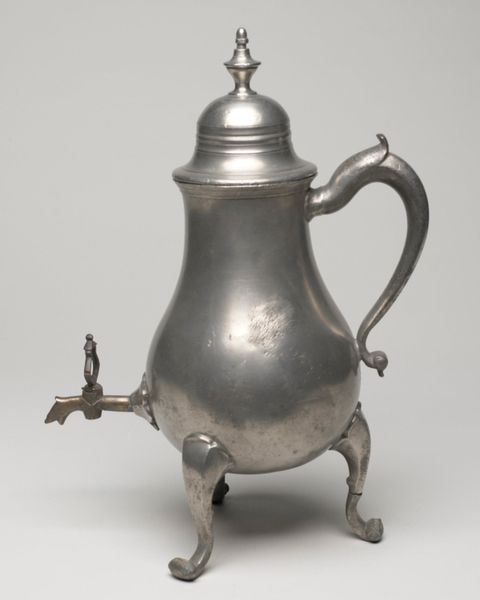
silver, sculpture
#
technical car design render
#
3d sculpting
#
3d model
#
silver
#
3d printed part
#
plastic material rendering
#
virtual 3d design
#
3d shape
#
sculpture
#
metallic object render
#
3d modeling
#
decorative-art
#
product render
Dimensions: 3 × 2 1/4 in. (7.6 × 5.7 cm)
Copyright: Public Domain
Curator: This is a miniature coffeepot, made of silver, dating back to the 18th century. It's currently housed in the Metropolitan Museum of Art. Editor: Immediately, it strikes me as a beautiful paradox – an object designed for warmth and gathering, yet presented in this diminutive, almost doll-like scale. There’s something a bit melancholy about it. Curator: The coffeepot as a symbol holds a lot of weight. Coffee in the 18th century was tied to trade, to intellectual salons, to a burgeoning middle class. Miniature versions might have represented those aspirations, or been gifts within families. Editor: Absolutely. And considering it’s silver, we need to consider labor: mining, smelting, hammering this into shape. Silver objects announced status, but required the hidden hands of many workers to create. I also find myself wondering about the handle, what material was used and where that would've come from. Curator: Indeed, silver signified prosperity. Think about how the reflective qualities of silver also came to symbolize purity, mirroring moral and spiritual ideals, very pertinent to 18th century aristocratic social and family ideals. Did owning this miniature affirm one’s participation in those structures? Editor: Or, did it mask the realities of acquiring such status? Consumption requires resources. The small size could almost serve as a way to minimize the discomfort, the visual absence of acknowledging the raw materials and human cost involved. Curator: That’s a powerful point. Even this everyday object has layers of complex social implications encoded within it. It speaks volumes despite its modest size. Editor: Yes, tracing back its materiality leads you to larger, somewhat hidden colonial-era structures. Now, even viewing an object such as this in the pristine setting of the Met, we have to grapple with the questions that an aesthetic experience generates as part of our everyday reality. Curator: Thinking about it as a symbolic representation of wealth rather than merely a utilitarian object gives me a renewed sense of the period and the social expectations contained within its form. Editor: And looking at its materiality allows a path for viewers to question the assumed nature of the value that we inherit, allowing us to be thoughtful about consumption in our own time.
Comments
No comments
Be the first to comment and join the conversation on the ultimate creative platform.
